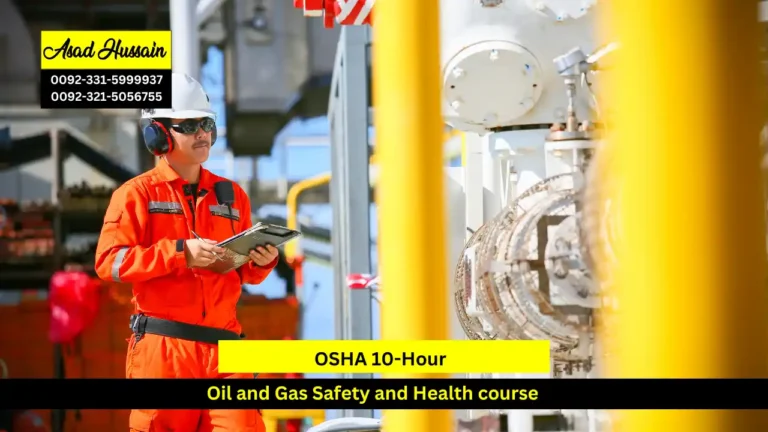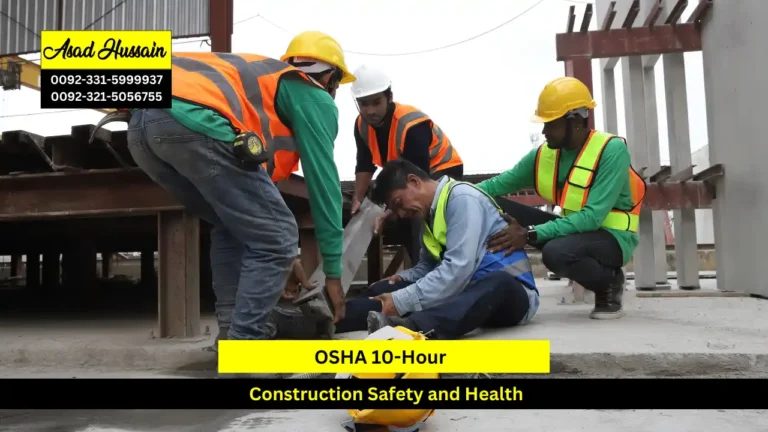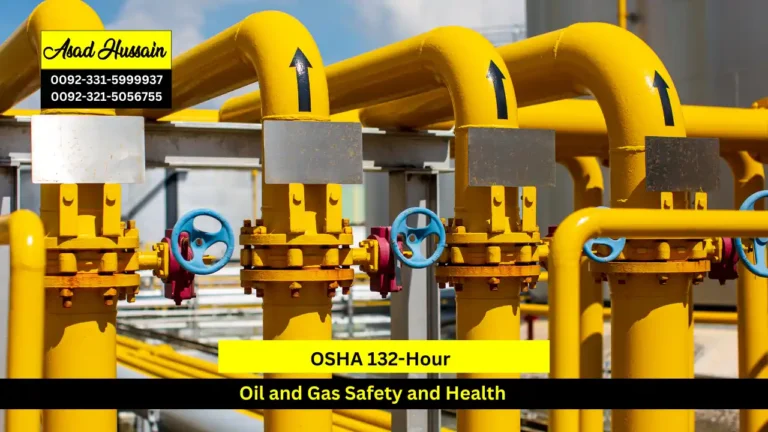In today’s workplace environment, safety and health are paramount. The OSHA 10-Hour General Industry Safety and Health course is a vital training program designed to equip employees with the knowledge and skills necessary to create safer and healthier work environments. Whether you’re new to the workforce or looking to refresh your safety skills, this course offers a comprehensive foundation in general industry safety standards.
The OSHA 10-Hour General Industry Safety and Health course is a program developed by the Occupational Safety and Health Administration (OSHA) to provide workers with essential safety knowledge. The course is intended for employees in various industries and focuses on the identification, avoidance, and prevention of safety and health hazards.
The OSHA 10-Hour General Industry Safety and Health course is a valuable investment in workplace safety. By providing essential training in hazard recognition and prevention, the course helps create safer working environments and contributes to overall organizational success. Whether you’re an employer looking to improve safety practices or an employee aiming to enhance your safety knowledge, this course offers critical insights and practical skills that can make a significant difference in the workplace.For more information on enrolling in the OSHA 10-Hour General Industry Safety and Health course, visit OSHA’s official website or contact a certified training provider. Investing in safety training is not just a regulatory requirement but a commitment to a safer and healthier workplace for everyone.
Program Highlights
Mandatory Units
- Introduction to OSHA
- Walking and Working Surfaces
- Exit Routes, Emergency Action Plans, and Fire Prevention Plans
- Electrical Safety
- Personal Protective Equipment (PPE)
- Hazard Communication
- Machine Guarding
- Industrial Hygiene
- Ergonomics
- Bloodborne Pathogens
- Introduction to Industrial Safety
- Safety and Health Programs
- Material Handling and Storage
- Lockout/Tagout
- Fall Protection
- Confined Spaces
- Respiratory Protection
- Fire Safety
- Introduction to OSHA Standards
Minimum Age Requirement
- Participants must be at least 18 years old. This is to ensure that individuals have the maturity and legal standing to comprehend and apply safety and health regulations effectively.
Educational Background
- There is no formal educational requirement to enroll in the OSHA 10-Hour course. The training is designed for a broad audience, including those with varying levels of education and experience.
Language Proficiency
- The course is typically conducted in English. Participants should have a basic understanding of English to follow the training materials and communicate effectively during the course. Some providers may offer courses in other languages or provide translation services.
Work Experience
- No specific work experience is required. The course is suitable for new employees, experienced workers, or anyone seeking to improve their knowledge of workplace safety. However, having some familiarity with general workplace operations can be beneficial for understanding the course content.
Course Enrollment
- Enrollments can be done through OSHA-approved training providers or authorized online platforms. It’s important to choose a reputable provider to ensure that the course meets OSHA standards and provides a quality learning experience.
Commitment to Course Duration
- Participants must be able to commit to the full 10 hours of training. The course is usually spread over multiple sessions or can be completed in one day, depending on the provider’s format. Attendance and participation are crucial to receive the certification.
Basic Computer Skills (for Online Courses)
- If opting for an online course format, participants should have basic computer skills and access to a reliable internet connection. This includes the ability to navigate online platforms, complete quizzes, and participate in virtual discussions.
Identification Requirements
- Some providers may require participants to provide a valid form of identification before taking the course. This is to verify the identity of the participants and ensure that the certification is issued to the correct individual.
Special Accommodations
- If participants have any special needs or require accommodations due to disabilities, they should inform the training provider in advance. Many providers are able to make reasonable accommodations to ensure that all participants can complete the course successfully.
Introduction to OSHA
- Understand OSHA’s mission, purpose, and functions.
- Identify key OSHA standards and regulations applicable to general industry.
- Recognize workers’ rights and employers’ responsibilities under OSHA regulations.
- Explain the process for reporting workplace hazards and violations.
Walking and Working Surfaces
- Identify common walking and working surface hazards.
- Implement measures to prevent slips, trips, and falls.
- Understand proper maintenance and housekeeping practices for walking surfaces.
- Use and maintain appropriate fall protection systems where required.
Exit Routes, Emergency Action Plans, and Fire Prevention Plans
- Design and identify proper exit routes and emergency exits in the workplace.
- Develop and implement effective emergency action plans.
- Understand fire prevention strategies and the requirements for fire prevention plans.
- Conduct fire drills and ensure compliance with fire safety regulations.
Electrical Safety
- Recognize common electrical hazards and understand their potential risks.
- Implement safe practices for working with electrical systems and equipment.
- Understand lockout/tagout procedures for electrical safety.
- Identify and use proper electrical safety equipment and protective measures.
Personal Protective Equipment (PPE)
- Identify types of PPE and their appropriate uses.
- Understand the selection criteria and proper use of PPE.
- Inspect and maintain PPE to ensure its effectiveness.
- Educate employees on the importance of PPE in preventing injuries.
Hazard Communication
- Understand the requirements for hazard communication programs.
- Interpret and use Safety Data Sheets (SDS) effectively.
- Recognize and label hazardous chemicals properly.
- Implement training programs on hazard communication for employees.
Machine Guarding
- Identify common machine hazards and the types of machine guards used.
- Understand the principles of machine guarding and its importance.
- Inspect and maintain machine guards to ensure proper function and safety.
- Implement safe practices for operating and maintaining machinery.
Industrial Hygiene
- Understand the principles of industrial hygiene and its role in workplace safety.
- Identify and control workplace exposures to hazardous substances.
- Implement monitoring and assessment techniques for industrial hygiene.
- Understand the importance of proper ventilation and other control measures.
Ergonomics
- Identify ergonomic hazards and their impact on worker health.
- Implement ergonomic principles to reduce repetitive strain and musculoskeletal disorders.
- Assess and modify workstations and job tasks to improve ergonomics.
- Educate employees on ergonomic practices and injury prevention.
Bloodborne Pathogens
- Understand the risks associated with bloodborne pathogens.
- Implement procedures for handling and disposing of contaminated materials.
- Use personal protective equipment (PPE) to prevent exposure.
- Develop and follow exposure control plans.
Introduction to Industrial Safety
- Understand the basic principles of industrial safety and health.
- Identify common industrial safety hazards and risks.
- Implement safety measures and practices to address identified hazards.
- Understand the role of safety programs in promoting a safe work environment.
Safety and Health Programs
- Develop and implement effective safety and health programs in the workplace.
- Understand the components and benefits of a safety program.
- Evaluate and improve safety program effectiveness.
- Promote employee participation and engagement in safety programs.
Material Handling and Storage
- Identify hazards associated with material handling and storage.
- Implement safe practices for lifting, carrying, and storing materials.
- Understand proper use of material handling equipment.
- Develop and follow procedures for safe material handling and storage.
Lockout/Tagout
- Understand the purpose and importance of lockout/tagout procedures.
- Implement lockout/tagout procedures to control hazardous energy sources.
- Identify and use lockout/tagout devices properly.
- Conduct training and inspections to ensure compliance with lockout/tagout requirements.
Fall Protection
- Identify fall hazards and understand the types of fall protection systems.
- Implement and use fall protection systems effectively.
- Understand proper installation, maintenance, and inspection of fall protection equipment.
- Educate employees on fall prevention and protection practices.
Confined Spaces
- Understand the hazards associated with confined spaces.
- Implement confined space entry procedures and safety practices.
- Use and maintain necessary safety equipment for confined space entry.
- Develop and follow a confined space entry permit system.
Respiratory Protection
- Identify respiratory hazards and understand the types of respiratory protection available.
- Implement a respiratory protection program and select appropriate PPE.
- Fit-test and maintain respiratory protection equipment.
- Educate employees on the use and limitations of respiratory protection.
Fire Safety
- Understand the principles of fire prevention and control.
- Implement fire safety measures and practices in the workplace.
- Identify and use fire extinguishers and other fire suppression equipment.
- Develop and conduct fire drills and emergency response plans.
Introduction to OSHA Standards
- Understand the structure and scope of OSHA standards.
- Identify key OSHA standards relevant to the general industry.
- Interpret and apply OSHA standards to workplace safety practices.
- Develop compliance strategies to meet OSHA requirements.
The OSHA 10-Hour General Industry Safety and Health course is designed for a diverse range of individuals across various sectors who are keen to enhance their understanding of workplace safety and health. It is particularly beneficial for new employees, supervisors, and managers in general industry settings, as well as those in safety-related roles. Whether you are an entry-level worker seeking to familiarize yourself with essential safety practices or an experienced professional looking to update your knowledge and skills, this course offers valuable insights into identifying and mitigating workplace hazards. Additionally, it is ideal for those responsible for implementing safety programs or ensuring compliance with OSHA regulations. By providing foundational safety training, the course supports the development of a robust safety culture and promotes a safer work environment for all.







